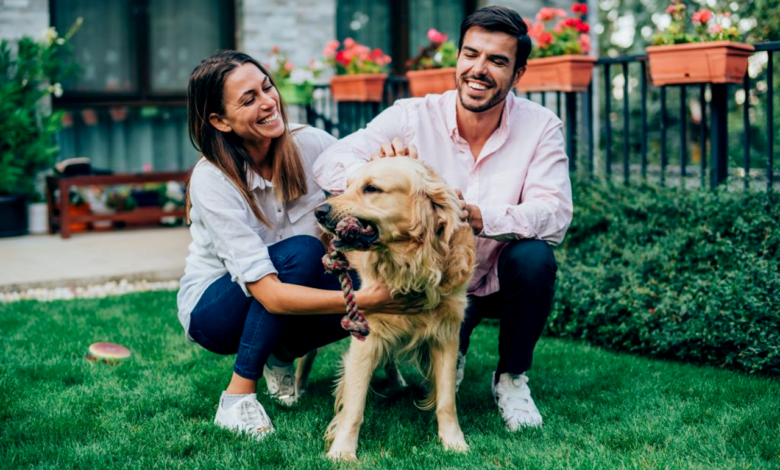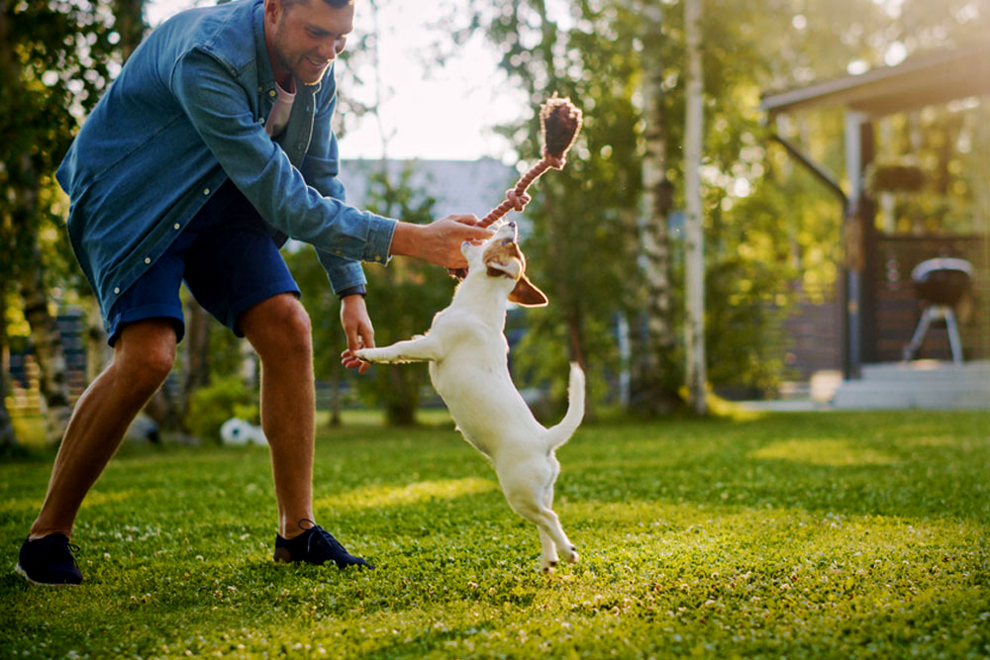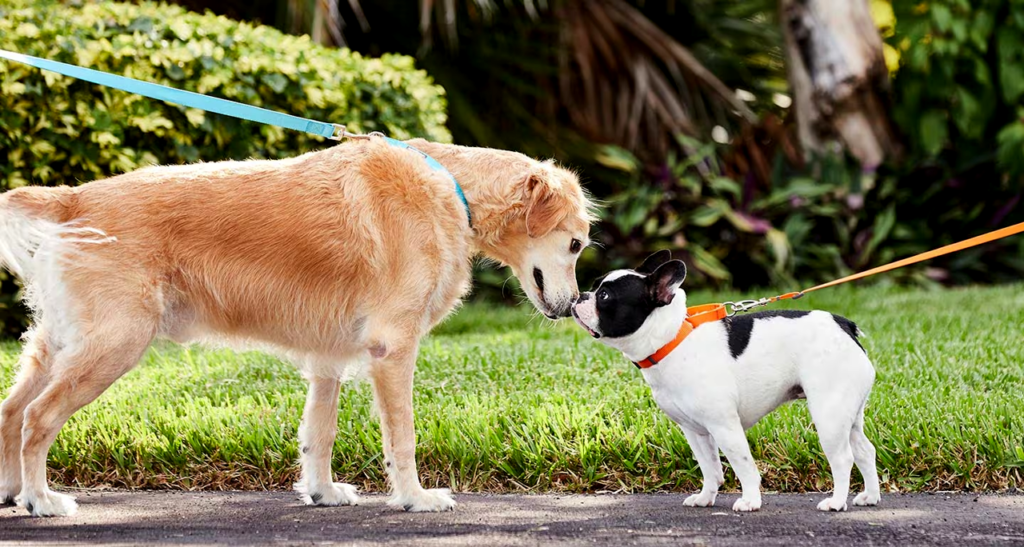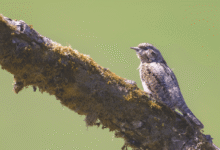
Many pet owners cherish spending time outdoors with their furry companions. However, creating a safe and enjoyable outdoor environment for pets requires careful planning and consideration. Pet-friendly gardening aims to provide a space where pets can roam freely without encountering hazards. From choosing the right plants to implementing safety measures, here’s everything you need to know about cultivating a pet-friendly garden.
Read More: Top Dog Breeds for Outdoor Enthusiasts
Benefits of Pet-Friendly Gardening

Promotes Exercise and Mental Stimulation
Pets thrive in environments where they can engage in physical activity and mental stimulation. A well-designed garden encourages pets to explore, play, and exercise, promoting their overall health and well-being.
Creates a Safe Environment for Pets
Pet-friendly gardens prioritize the safety of animals by eliminating toxic plants and potential hazards. By creating a secure outdoor haven, pet owners can enjoy peace of mind knowing their furry friends are protected from harm.
Choosing Pet-Safe Plants
Non-Toxic Plants for Pets
When selecting plants for your garden, opt for varieties that are safe for pets. Common pet-friendly options include marigolds, petunias, and ferns, which add beauty to your landscape without posing a risk to animals.
Avoiding Harmful Plants
Certain plants can be toxic to pets if ingested. Avoid planting species such as lilies, azaleas, and oleanders, which can cause adverse reactions ranging from mild gastrointestinal upset to severe poisoning.
Fencing and Boundaries
Creating Boundaries for Pets
Establishing clear boundaries helps prevent pets from wandering into restricted areas or neighboring properties. Install fences or barriers to delineate the boundaries of your garden and keep pets safe within designated areas.
Choosing Pet-Friendly Fencing Materials
When installing fencing, choose materials that are safe for pets. Avoid using sharp edges or toxic substances that could harm animals. Opt for sturdy, pet-friendly materials such as vinyl or wood to ensure the security of your garden enclosure.
Garden Layout and Design
Designing Paths and Play Areas
Design your garden layout with pets in mind, incorporating pathways and designated play areas where pets can roam freely. Create pathways using pet-safe materials such as gravel or mulch to minimize the risk of injury.
Incorporating Pet-Friendly Features
Integrate pet-friendly features into your garden design, such as raised beds or designated digging areas, to accommodate your pet’s natural behaviors. Providing outlets for digging and exploration helps prevent damage to plants and landscaping.
Water Safety for Pets
Choosing Safe Water Features
If you have water features in your garden, ensure they are safe for pets. Avoid ponds or pools with steep edges that may pose drowning hazards for animals. Install shallow water features or provide ramp access to prevent accidents.
Preventing Drowning Hazards
Take precautions to prevent pets from accessing water features unsupervised. Erect barriers or coverings to restrict access to ponds or pools when pets are unsupervised, reducing the risk of accidental drowning.
Pest Control Without Harmful Chemicals
Natural Pest Repellents
Combat garden pests using natural repellents that are safe for pets. Options such as diatomaceous earth, neem oil, or companion planting help deter pests without exposing pets to harmful chemicals.
Pet-Safe Pest Control Methods
Implement pet-safe pest control methods to address infestations effectively. Choose pet-friendly alternatives to chemical pesticides, such as pheromone traps or beneficial insects, to control pests without endangering animals.
Maintaining a Clean Garden

Regular Cleanup Practices
Maintain a clean and tidy garden environment by regularly removing debris and pet waste. Clean up fallen leaves, branches, and other hazards to create a safe space for pets to explore and play.
Removing Pet Waste Safely
Dispose of pet waste properly to prevent contamination and odor buildup in your garden. Use biodegradable bags to collect pet waste and dispose of it in designated waste bins or composting areas.
Educating Neighbors and Visitors
Communicating Pet-Friendly Policies
Educate neighbors and visitors about your pet-friendly garden policies to ensure mutual respect and understanding. Display signage or communicate verbally about expectations regarding pet behavior and interaction within the garden space.
Providing Information on Safe Interaction
Offer guidance on how to interact safely with pets in the garden, especially for visitors unfamiliar with animal behavior. Encourage gentle handling and respectful boundaries to prevent conflicts or accidents.
Creating Shelter and Shade
Designing Pet-Safe Shelters
Provide shelters or shaded areas where pets can seek refuge from the sun or inclement weather. Install pet-friendly structures such as doghouses or shade sails to offer protection and comfort to animals outdoors.
Selecting Shade-Providing Plants
Incorporate shade-providing plants into your garden design to create cool retreats for pets on hot days. Choose trees or shrubs with dense foliage that offer ample shade and shelter for pets to rest comfortably.
Training and Supervision
Training Pets for Garden Etiquette
Train pets to respect garden boundaries and behave appropriately in outdoor settings. Use positive reinforcement techniques to teach commands such as “stay” or “leave it” to prevent destructive behavior or wandering.
Pet-Friendly Gardening: Creating a Safe Outdoor Haven

This section focuses on practical tips and techniques for creating a safe outdoor haven that promotes the well-being of both pets and plants. It discusses mulching techniques and chemical-free pest control methods to ensure a healthy and hazard-free environment.
Mulching Techniques
Readers are encouraged to use pet-safe mulching materials to enrich soil quality and retain moisture without exposing pets to harmful substances. Tips on choosing the right mulch and avoiding toxic options are provided to help readers make informed decisions.
Chemical-Free Pest Control
The section emphasizes the use of natural pest control methods, such as companion planting and beneficial insects, to deter pests without resorting to harmful chemicals. This promotes a healthy ecosystem in the garden while safeguarding pets from potential hazards.
Read More: The Benefits of Indoor and Outdoor Play for Pets
FAQs
-
- Are there specific plants that I should avoid planting in my pet-friendly garden? Yes, there are several plants that can be harmful or toxic to pets if ingested. Some common examples include lilies, azaleas, and oleanders. It’s essential to research and avoid planting these species to ensure the safety of your furry friends.
- How can I deter pests from my pet-friendly garden without using harmful chemicals? There are several natural pest control methods that are safe for pets. You can use options such as diatomaceous earth, neem oil, or companion planting to repel pests without exposing your pets to harmful chemicals.
- What steps can I take to prevent my pets from wandering into neighboring properties from my garden? Creating clear boundaries is crucial to prevent pets from wandering into restricted areas. Installing secure fencing or barriers around the perimeter of your garden can help delineate boundaries and keep pets safely within designated areas.
- How should I handle pet waste in my pet-friendly garden? It’s essential to dispose of pet waste properly to maintain a clean and hygienic garden environment. Use biodegradable bags to collect pet waste and dispose of it in designated waste bins or composting areas to prevent contamination.
- Q: What are some signs that a plant in my garden may be toxic to pets? Symptoms of plant toxicity in pets can vary depending on the plant species and the amount ingested. Common signs of plant poisoning may include vomiting, diarrhea, lethargy, drooling, or difficulty breathing. If you suspect your pet has ingested a toxic plant, seek immediate veterinary care.
The Final Words
The article concludes by summarizing the key points discussed and reiterating the importance of pet-friendly gardening practices. It emphasizes the benefits of creating a safe outdoor haven for pets and encourages readers to implement the tips and techniques shared to enjoy a harmonious garden environment.







